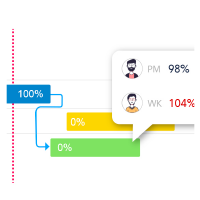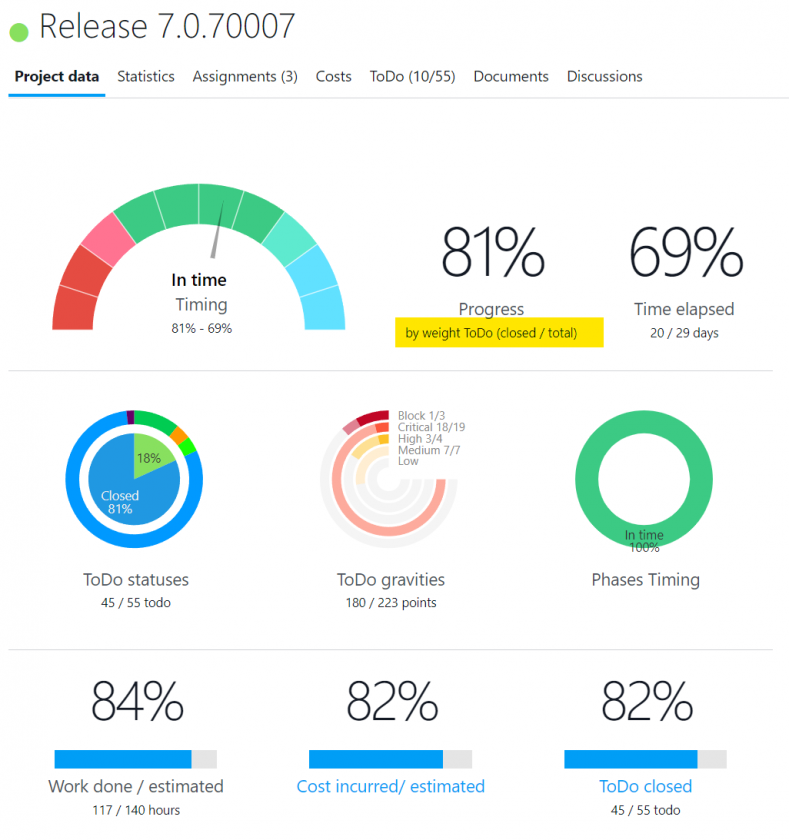To know the progress of the project status at any time is one of the main responsibilities of a project manager.
To this end, project status meetings become a fundamental tool throughout the project life cycle.
Unfortunately, however, too often, these appointments turn into a waste of time losing sight of the objectives of the meeting itself.
In this article we will try to unveil some secrets to carry out effective Project status meetings.
CONTENT INDEX
- The aims and times of the meetings on the progress of the project
- The most common reasons why project progress meetings turn into a waste of time.
- 1. Unclear or even missing agenda
- 2. Inability to maintain focus on the subject matter of the meeting
- 3. Absent or ineffective feedback from team members
- Bottom line
The aims and times of the meetings on the progress of the project
The frequency of these meetings obviously varies depending on:
- the complexity of the project;
- the number of project team members;
- the level of information required by the project owner, by customers, stakeholders, etc.
- from the level of involvement of the project task manager.
Once the timing has been established, it is fundamental for the Project Manager to evaluate, during the meetings, the progress of each of the following elements:
- Updates of individual activities.
- Progress of the project compared to planning: are we late or early?
- Budget status: are we under or have we exceeded the budget?
- Quality status: are we maintaining the expected quality levels?
- Current or hypothetical problems (such as changes, problems with resources, dissatisfaction with the customer or supplier, etc.).
- Next steps to be taken.
Project status meetings are essential for the Project Manager and must be scheduled periodically.
Thanks to these meetings the Project manager has the possibility to:
- Keep the focus on the project.
- Orient the team to look in the same direction.
Unfortunately, too often these important meetings are ineffective and fail to bring benefits to the project in the intended way.
The most common reasons why project progress meetings turn into a waste of time
There are some recurring reasons why project status meetings fail. Here is a list of the most frequent:
- Unclear or even missing agenda.
- Inability to maintain focus on the subject matter of the meeting.
- Absent or ineffective feedback from team members.
- Ineffective support tools

Do you wish to have your projects under control?
With Twproject you can monitor the progress of all project phases and have a complete status overview.
Try Twproject!1. Unclear or even missing agenda
When Project status meetings doesn’t have a previously defined and shared agenda, they will inevitably become unclear and ineffective.
Without a roadmap that marks the road, the meeting is easily dispersed and time is often misused or even lost.
In addition, team members will not be able to provide effective feedback as they are not prepared to face the meeting.
The purpose of a project status meeting is to obtain an update on the status of activities, identify problems and so on.
Therefore It’s essential that team members prepare themselves on time and collect specific data before the meeting to be prepared to answer certain key questions.
Without specific predefined objectives, the meeting will not bring any benefit.
2. Inability to maintain focus on the subject matter of the meeting
Closely related to the previous one, it is the inability to stay on the pre-established tracks.
This incapacity is very frequent.
In fact, participants often tend to digress, considerably reducing the time dedicated to the purpose of the meeting.
Thus we arrive at the crucial issues with little time available, often taking decisions of poor quality dictated by haste.
In order to avoid these situations, it is essential that the project manager actively leads the meeting, keeping the focus on the pre-established topics in the agenda.
Establishing clear rules at the beginning of the meeting, such as limiting off-topic interventions and encouraging focused participation, can help prevent unnecessary digressions.
Using facilitation techniques such as time boxing, i.e. assigning a specific time to each topic, can be very effective. In this way, each item will be dealt with on time, avoiding delays and ensuring that all important issues are properly discussed.
3. Absent or ineffective feedback from team members
As mentioned above, the purpose of these meetings is to discuss the progress of a particular project.
Getting clear feedback from everyone is not always easy, especially in the absence of tools to support this information.
Often resources work on several projects at the same time and remembering the issues of all projects is not easy.
The use of inadequate or outdated tools can compromise the effectiveness of status meetings. If team members lack effective collaboration tools, communication may be fragmented and crucial information may be lost.
Furthermore, the absence of shared platforms for updating tasks and managing documents makes it difficult for the project manager to monitor the actual status of the project.
It is essential that the team adopts tools that allow information to be updated and shared in the manner indicated in the project documentation.
In this way, the data collected can be used to derive accurate reports, and the document obtained can guide informed decisions. When support tools are ineffective, valuable time may be wasted during meetings trying to retrieve missing information or correct errors due to inefficient communication.
To avoid such problems, it is important to select project management tools that facilitate collaboration, document sharing and real-time updating of activities. If a team member identifies a problem or risk, he/she should be able to immediately transmit it to the project manager and other stakeholders through appropriate channels.
There are project management tools that have precisely the purpose of collecting project data and activities, then offering advanced statistics and dashboards with the specific purpose of making the progress of a project clear.
In Twproject for example, resources actively work on the project, close ToDo’s, enter worklogs, all information that is then available to the project manager in advanced statistics.
It offers automatic progress percentage calculation, a real step forward!
Twproject makes project progress meetings a time for discussion and alignment on information that is in fact already visible.
The project manager will then only have to monitor this information and may resort to meetings if there are issues to be addressed.
Reducing meetings, distractions and email exchanges is one of the main purposes of project management software.

Bottom line
Project status meetings are a key tool in the project manager’s toolbox.
Unfortunately, a few project managers have adopted methods and techniques to ensure that these sessions are concise, productive and valuable.
Too many project managers assume that a project status meetings means sending an invitation to the meeting and simply showing up.
For teams looking to improve meeting outcomes, adopting strategies for more productive meetings can make a significant difference in engagement and results.
Project status meetings require a lot more!
The good news is that when project status meetings are effective and efficient, the results are huge!
The productive meetings on the progress of the work:
- increase the morale of the group.
- Provide comprehensive information on the status of the project.
- Discover potential risks.
- Provide a forum for the timely resolution of problems.
- Encourage the sharing of relevant information among team members.
Finding the best time to plan a meeting on the progress of a project is very important.
It may be obvious, but it’s not just about finding a day when the team is available, it’s about finding a day when none of your colleagues have important deadlines, scheduled appointments or high-priority activities to close.
Using a project management software like Twproject, with shared agendas, is essential to manage a focused team.



